



Increases arterial flow to improve nutrient and oxygen supply to cells and stimulate cellular regeneration.
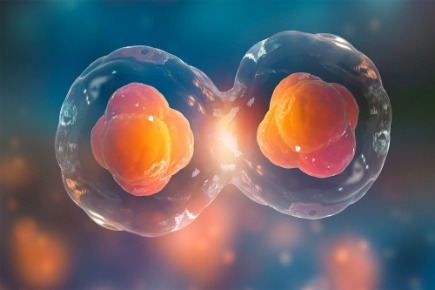
Increases cellular metabolism through various physiological pathways and internal temperature to stimulate cell growth and proliferation and maintain homeostasis.

Boosts intracellular energy transfer by transforming ADP into ATP for better cell function.

Improves cell membrane balance in all the cells within the treated area (fibroblasts, adipocytes, etc…) to augment cell growth regulation.

Re-polarizes the cell membrane from a pathological -40 mV to a physiological -70 mV.

Transforms the extra-cellular matrix from a pathological gel state to a physiological and healthy sol state.

Increases lymphatic and venous flows to improve removal of toxic agents and catabolites.

Potentiation of, and synergy with active agents in the Roll-On handpieces that are diffused into the dermis and hypodermis, provides advantages compared to intramuscular or oral applications.
TCare offers the ability to provide capacitive energy transfer and resistive energy transfer treatments. Each mode targets different types of tissues. Depending on various factors, TCare treatments can create sensations ranging from very gentle, hardly-noticeable warming of the skin over the treated area to deep intense, internal heating. Which sensation you create depends on the first place on whether capacitive or resistive energy transfer is applied. Other factors that play a role are distance between the active handpiece and passive electrode, the intensity settings you select, the duration of the treatment, the handpiece sizes and movement during the treatment. In addition, disorder or injury acuteness, patient level of hydration and thus tissue impedance, and other internal and external factors may influence treatment parameters and effects. It is known that tissue impedance of damage or diseased cells is different from healthy cells. This means that you can determine exactly which treatment effects you want within specific tissues by selecting your treatment parameters on the TCare.

In capacitive mode, ion movement is restricted by a high-performance, bio-based polyamide insulation layer on the handpieces. Energy is thus largely accumulated directly under the handpiece. Tissue temperature increase and decay are more intense, and concentrated in superficial and soft tissue structures such as muscle, blood and lymphatic vessels and the different skin layers. Because of this, handpiece size and movement speed of the handpiece during treatment are important considerations. Namely, for the same treatment intensity setting, tissue temperature increase under the larger handpieces will be more gradual than under smaller handpieces. Or when moving the handpiece more slowly over the treatment area, tissue temperature increase will be more intense than when moving vigorously over the same area. TCare thus offers you several handpiece sizes so that you can select the most appropriate handpiece size depending on the size of the to-be-treated area and the envisioned therapeutic effect. Handpiece movements can be circular or linear, and above all - for optimal and safe energy transfer - should follow the topographical contours of the treated area without loosing contact between handpiece and skin. TCare’s Roll-On handpieces are specifically designed to minimise strain and effort for the therapist when delicately and precisely applying the TCare treatments. In fact, the TCare handpieces are designed in such a way that they become an extension of the therapist’s hands. This provides the ability for the therapist to apply various massage techniques; patients will hardly notice that a handpiece is being used. The intimacy and hands-on experience that bring so much important comfort and reassurance to the patient are thus not lost.

The resistive mode, uninsulated handpieces are used and direct coupling takes place. The repeated reversal of the current’s polarity produces a quicker and more intense temperature increase in tissues that are deprived of water and electrolytes. The resistive energy transfer mode is therefore particularly suited for treatments in bone and adipose tissues. Because the active electrode is not insulated, the accumulation of energy and the ensuing temperature-related effects are less concentrated under the active handpieces. Rather, the effects of the resistive mode depend more on the location of the passive electrode or plate. In other words, the therapeutic effect will be located between the active handpiece and passive electrode, there where tissue impedance has changed because of cell damage. When making resistive energy transfer mode treatments the active handpiece can remain in a fixed position, while the patient performs active or passive movements. After all, movement stimulates tissue healing. While the active handpiece is held in place and movement is initiated, treatment intensity is continuously adjusted on the TCare so that the patient feels a pleasant sensation in the affected area. In this way resistive mode treatments are ideal for the treatment of various joint disorders and injuries, in both young and old.
Capacitive and resistive energy transfer can be used to enhance the diffusion of active, pharmacological agents that are prescribed by a physician for a particular pathology. Next to the non-thermal and thermal effects, transdermal drug delivery offers an extra, third dimension of treatment opportunities.
At higher temperatures skin pores under the handpiece will open. When the skin pores open diffusion is enhanced which can be used for transdermal delivery of active, pharmacological agents. The vasodilatation created by capacitive and resistive energy transfer in the upper skin layers and then underlying tissues ensures wider and deeper distribution of active agents to assist in treating specific pathologies. Transdermal drug delivery with TCare thus guarantees ideal conditions for active agents to penetrate in the exact intended pathological area. All this helps reduce the amount of administered pharmaceuticals needed to gain local therapeutic effects and can be a good alternative to gastrointestinal administration of pharmaceuticals
TCare transdermal drug delivery with the Roll-On handpieces is totally pain-free and a very simple process. The pharmacological agent that was prescribed by a physician is simply added in the right proportions to the Roll-On container and mixed with the contact cream. The quantities of cream and active agent needed are proportional to the to-be-treated body area. The Roll-On container is then simply inserted into one of the Roll-On handpieces, and TCare CRET will do the rest.
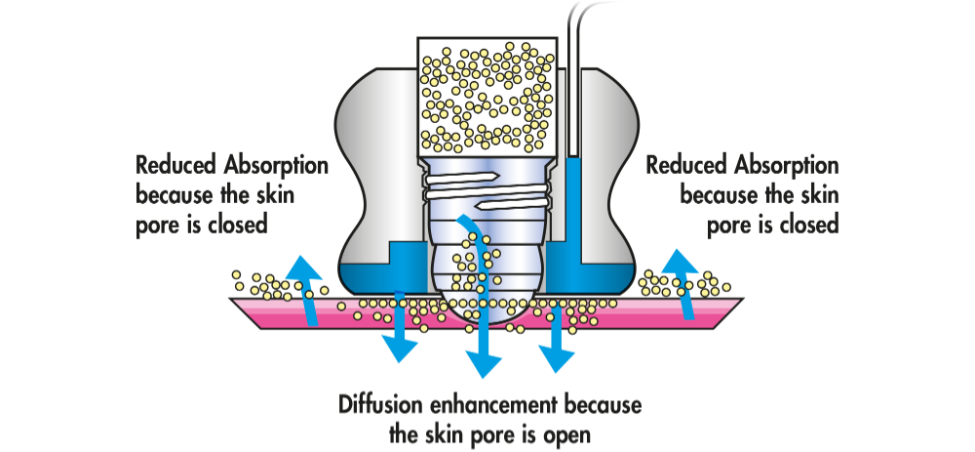




The therapist can adjust the position of the Roll-On container and roller ball in the Roll-On handpiece to exactly adapt to the specific topography of certain anatomical areas.
By simply twisting the Roll-On container in or out of the handpiece the handpiece surface is adapted to be flatter to treat large flat areas.
Or the roller ball can be put into a more protruding position to transfer more cream and optionally more active pharmacological agent to the treat area.



R. Galli, P. Schenone, G. Tramontano, C. Craviotto, A. Giusti, G. Bianchi
Asl3 Genovese, SC Rheumatology Department of Medical Specialties and Functional Locomotor System, Genoa-Nervi polyclinic
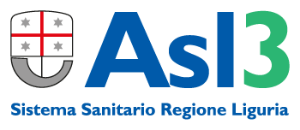
Tecar therapy can be used for many types of rheumatic disorders as useful support method to speed up the regenerative process of cells.
METHOD: 30 subjects were enrolled, followed by our outpatient SC Rheumatology of Nervi, of which 19 women (average age 64 in a range between 18 and 81 years) and 11 men (average age 57 in an age range between 24 and 82) divided as follows:All patients received 8 sessions of Tecar therapy on a bi-weekly basis as follows: 10 minutes with capacitive roll-on handpieces plus 10 minutes with resistive roll-on handpieces, with the machine frequency set to 1 MHz. In particular, 8 subjects with APS and 7 subjects with RA received the treatment with its use of drug for topical use (Ketoprofen Lysine Salt); the remaining patients received treatment in the absence of drug. All subjects were assessed for pain (VAS 0-10) at the beginning (T0) and at the end of treatment (4 weeks from start=T4).
- 16 subjects with Psoriatic Arthritis (PsA)
- 14 subjects with Rheumatoid Arthritis (RA)

Register and request us the complete clinical trial!
Because of its multiple physiological effects, TCare can be successfully implemented in the treatment of over 340 types of injuries and disorders that can be found in the WHO International Classification of Diseases and Health Related Problems (ICD-10). In acute injuries TCare will relieve pain immediately through its pain modulating capacity and ability to reduce oedema. In the subacute phase TCare will stimulate cellular regeneration. While in the late phase of rehabilitation TCare can be used to reduce soft tissue tensions and joint stiffness to allow for healthy movement and therapeutic exercise.

| Joint disorders and injury | Spine disorders and injury | Soft tissue disorders and injury | Bone disorders and injury |
|---|---|---|---|
| Contractures | Kyphosis, lordosis and scoliosis | Muscle and tendon injuries | Fractures |
| Articular cartilage injury and disorders | Osteochondrosis | Synovitis and tenosynovitis | Stress fractures |
| Arthrosis | Spodylopathies | Bursitis | Osteoporosis |
| Hallux valgus and hallux rigidus | Disc disorders | Fibromatosis | |
| Patellar disorders | Radiculopathy | Shoulder lesions | |
| (e.g. PFPS, derangements, chondromalacia,…) | Cervicobrachialgia | (e.g. rotator cuff, labrum tear, acute subacromial bursitis,...) | |
| Non-specific joint pain and aches | Sciatica | Enthesopathies | |
| Stiffness | Lumbago | Contusions | |
| Dislocations and subluxations | Non-specific low back pain | ||
| Ligament sprains, strains and ruptures | |||
| Capsular disorders and injury |
| Absolute | Relative |
|---|---|
| Pregnancy | Open wounds and skin lesions |
| Peacemakers | Skin sensitivity disorders |
| Neoplasms | Cardiovascular disease |
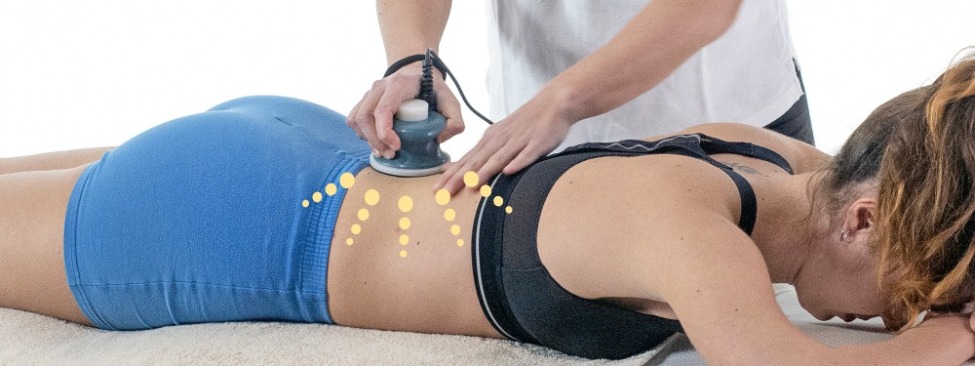
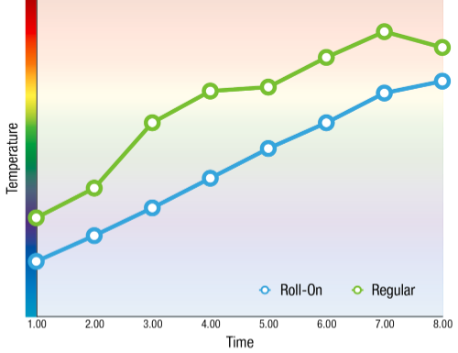
Our Roll-On handpiece is a unique, proprietary, patented handpiece. It was designed by clinical experts to guarantee the best possible geometric, capacitive-resistive energy transfer between the handpiece to the patient’s body. The distinct shape of the handpieces ensures complete, congruent contact with the patient’s skin.
The Roll-On inserts ensure that the right amount of contact cream is consistently applied to make sure that treatments are as smooth and effective as possible. A consistent and exact layer of contact cream protects the patient from dielectric arcs that can cause injury, by guaranteeing a well-controlled electro-chemical gradient. Because the Roll-On handpieces do not require contact cream to be intermittently applied to the skin, which influences skin temperature, increases in temperature are more consistent and linear. This adds to the predictability and safety of CRET treatments. The Roll-On handpiece also significantly reduce the use and waste of contact cream, which in turn reduce operating costs.

Roll-On handpiece

Regular handpiece


The Roll-On handpieces are designed to minimise any capacitive-resistive energy transfer to the therapist’s hands. This means that all CRET energy can be focussed onto the patient without unnecessarily heating the therapist’s hands and wasting useful energy. Because of the unique grip design the therapist’s hands and fingers are always kept at an adequately safe distance from the generated electromagnetic fields. Furthermore, the handpiece grips are manufactured from a specially-selected insulating material which further contributes to the safety and health therapists who work daily with our TCare.
The unique Roll-On grip design feature ensures an ergonomically correct and advantageous hand position for the therapist on the handpiece. In combination with the specifically designed contact surfaces, the Roll-On handpieces glide effortlessly and extremely smoothly over the patient’s skin, while continuously maintaining a maximum of contact. Our Roll-On handpieces safeguard therapists from contracting repetitive stress injuries from working in unergonomic conditions.
Because intermittent application of contact cream is not necessary with the Roll-On handpieces, the skin temperature in the treated area can be kept homogenous and constant. This is particularly important for effective and efficient transdermal drug delivery for which our Roll-On handpieces are particularly suited.
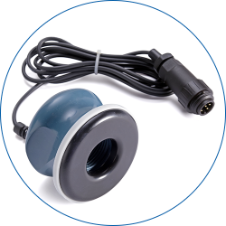



Low back pain treatments
In low back pain treatments, TCare therapy starts with capacitive mode. Particularly in chronic low back pain our aim is to reach vascularisation and even hyperactivation conditions. The increase in tissue temperature will noticeably increase tissue elasticity and release a tight lumbar fascia. Muscle spasm in a tight quadratus lumborum muscle will resolve in a matter of minutes, allowing us to proceed with gentle stretching, combined with resistive mode.

Neck ache treatments
The medium, capacitive Roll-On perfectly fits the contours and topography of the upper trapezius muscle. In neck ache treatments and soft tissue work we always first apply capacitive mode because the trapezius is the most superficial muscle and there is usually not so much subcutaneous fat in that area. The medium handpiece size fits so naturally into the therapist’s hands during manual soft tissue treatments that patients will hardly notice any device is being used at all.

Jaw pain and TMD
Jaw pain due to overly tight masticatory muscles can be very incapacitating for patients. It can cause a whole range of associated problems such as headache, visual and auditory issues, and more. The mini capacitive handpiece is perfect for treating these small areas. We use capacitive more to increase tissue temperature and release the masseter muscle.
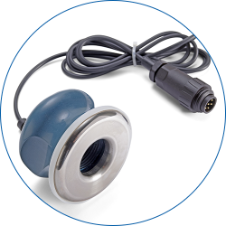


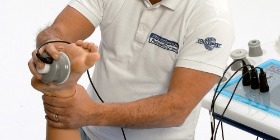
Achillodynia and heel pain treatments
Resistive energy transfer largely targets inert tissues which makes it the perfect mode for the treatment of achilles tendon issues and various sources of heel pain. Movement increases tissue resistance to energy transfer so that it gets concentrated exactly there where it is needed. The large resistive Roll-On is placed on the plantar side of the foot as it is passively, active-passively or actively moved from plantar to dorsiflexion.

Shoulder injury treatments
Mobilisations are an essential part of shoulder injury treatments. With the patient holding the medium resistive Roll-On in their hand, the therapist has the hands free to perform passive to active shoulder mobilisations. Through this resistive energy transfer is focussed on the affected area, because that is where tissue impedance has changed. By increasing tissue temperature, greater tissue elasticity is reached which in turn helps increasing range of motion through mobilisation.

Tennis and golfer’s elbow treatments
The mini resistive Roll-On handpieces glide perfectly around and over bony structures such as ridges, epicondyles and malleoli. They are used to navigate difficult areas such as hands, toes and fingers, ankles, the TMJ and other smaller joints structures. In the treatment of lateral and medial epicondylitis these smallest resistive handpieces are used to exactly target the injured structures.
Pre and post-natal care is a hot topic. We can consider GPS Pathways for Rehabilitation for this purpose.


In post-natal patients with low back or sacro-iliac joint pain, TCare can be applied in both resistive and capacitive modes to reduce joint swelling, pain and inflammation. Resistive mode can also be used to treat pain originating from muscle tension in the pelvic floor, which can be the source of low back and macro-iliac joint dysfunction.
From a physio-aesthetics viewpoint, particularly capacitive mode
with its 3 operating frequencies to control treatment depth and intensity, can
be very useful to treat sagging skin after pregnancy. Even more so, the
combination of both capacitive and resistive modes, can also be used to treat
scar tissue from a caesarian delivery.
(Pictures from a specific case of treatment using CRET therapy with our TCare device)
We treated the patient over 4 weeks, at 2-3 day intervals. The treatments lasted 45 minutes. We used a combination of both RES and CAP modalities. The aim was to respectively affect collagen (connective tissues) and subnormal fat layers. At the surface of the skin we tried to reach temperatures of 42-45°C. Also placing of the passive plate was important; we placed it parallel to the working area.

Today rehabilitation and physical therapy practices are under tremendous time and space pressure to cope with the massive amount of patients that present with musculoskeletal disorders and injuries. Moreover, patient profiles vary greatly and patients are increasingly demanding; they want results now and do not want to spend much time in therapy. To stay competitive, clinicians are forced to choose the most efficient and effective means possible to treat patients.
GPS Therapeutic Pathways represents a unique opportunity to relieve the strain on modern, advanced practices. This latest treatment concept encompasses Chinesport’s top-of-the-line therapeutic devices in a simple, one-stop, affordable package. Clinicians can now combine three different therapeutic modalities in a single intervention. TCare capacitive and resistive energy transfer (CRET) is used to modulate pain and promote cellular regeneration. At the same time, Mi.TO/Sinthesi therapy provides the possibility to initiate myofascial release and soft tissue lengthening. Archimede pulley and suspension exercise therapy delivers precise mechanotransduction impulses through specific therapeutic exercises to initiate tissue repair processes. Integrative posture exercises close the therapeutic cycle by integrating newly restored posture into everyday movement patterns. A follow-up GPS Postural Labs assessment can confirm whether progress has been made. The ability to combine all GPS Therapeutic Pathways at once, saves valuable time, resources and energy for both patient and clinician.

Introduction to the TCare device - Testimonials - Designed with you in mind - How does TCare work - What are the effects of a TCare treatment - Precise treatment effects and tissue selectivity - Fields of application - The patented roll-on handpiece -The TCare device - Introduction to the GPS Therapeutic Pathways - The GPS Therapeutic Pathways courses - The GPS Academy - Chinesport, just a click away
Brochure, Ed. Nov. 2019. English. 36 pages.


